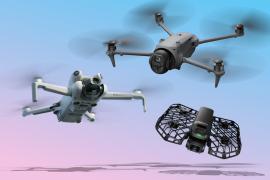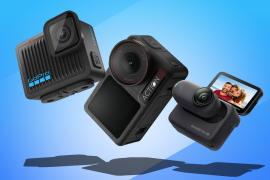The Insta360 Go Ultra is my new favourite action camera – even if it’s not quite as tiny as its predecessors
A transformative image quality upgrade takes Insta360’s smallest camera a very big deal
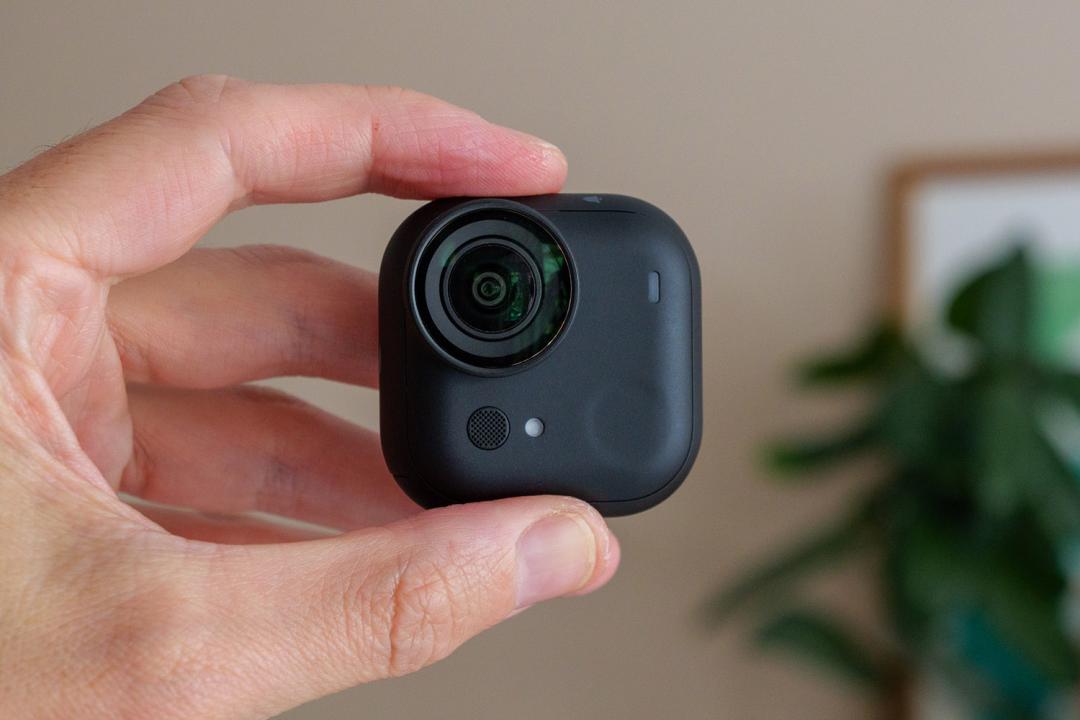
Stuff Verdict
A generational leap in video quality makes this not just a great tiny action camera, but a great action camera full-stop.
Pros
- Superb all-round image quality
- Small enough to wear on pendant or hat
- Good battery life
Cons
- Not as small and light as previous Go models
- Action Pod still not fully waterproof
- No flat log colour profile
Introduction
When it comes to tiny action cameras, Insta360’s Go range has long been top of the pile. These cameras, the last of which was the Insta360 Go 3S, are small enough to wear clipped onto clothing or even around your neck – but there’s always been a price to pay when it comes to image performance. The new Insta360 Go Ultra changes that.
Thanks to a new and much larger sensor, the Go Ultra can record video at 4K 60fps, and access hitherto unavailable modes like ultra-sensitive PureVideo. It does mean the size and weight has increased over the Go 3S, even if the price (from $449.99 or £389) hasn’t gone up by much.
Having seen the new design, I was a little sceptical about the Go Ultra’s ability to balance bulk and image quality. But, having tested it over the course of a week, I’m now pretty sure it’ll be my go-to (no pun intended) action camera for the next few months. Read on to find out why.
How we test cameras
Every camera reviewed on Stuff is tested in a range of lighting conditions, with a variety of subjects and scenes. We use our years of experience to compare with rivals and assess ergonomics, features and general usability. Manufacturers have no visibility on reviews before they appear online, and we never accept payment to feature products.
Find out more about how we test and rate products.
Design & build: squaring the lozenge
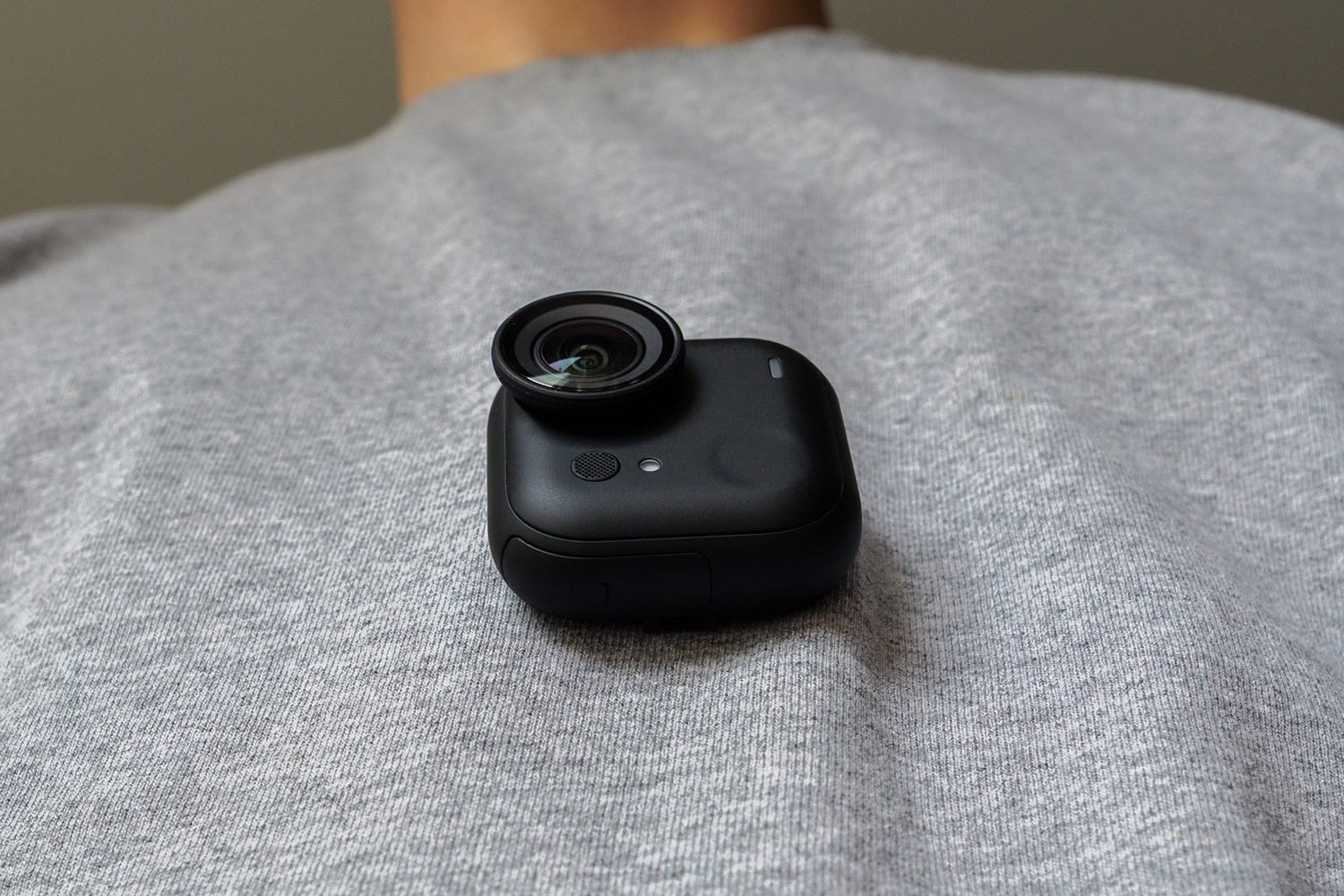
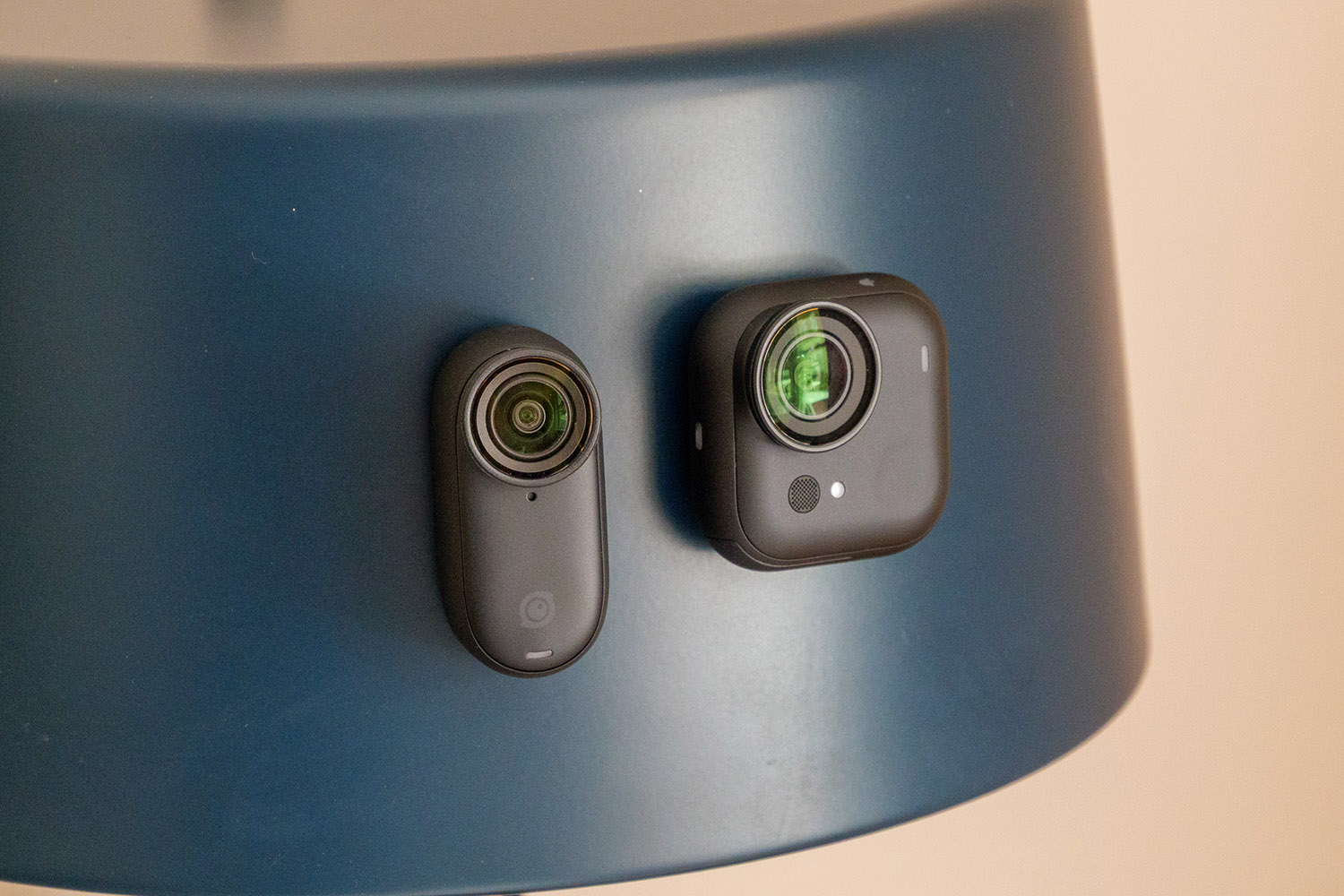
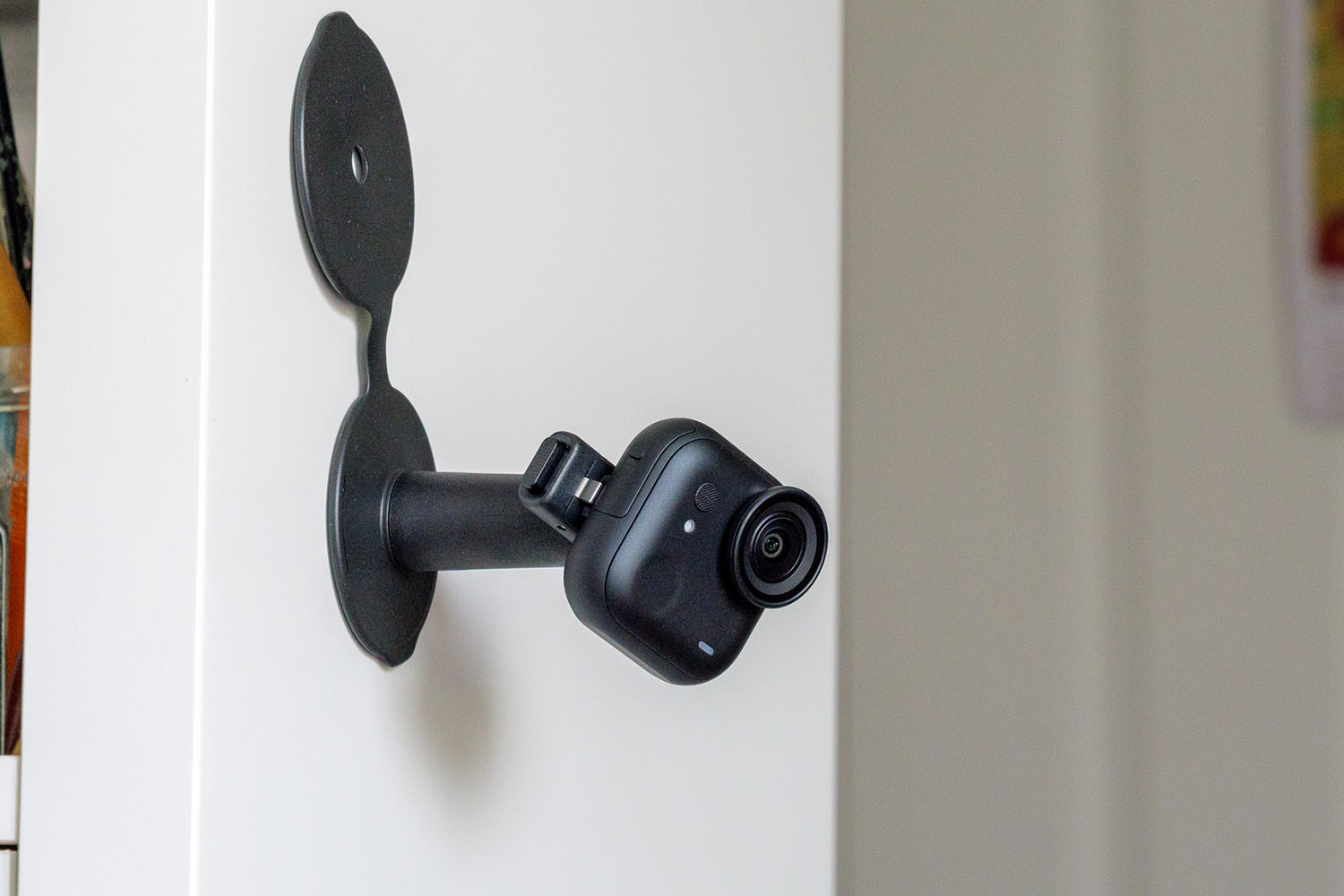
Previous Go cameras have all looked fairly similar: a curved lozenge shape, roughly the size of a human thumb. The Go Ultra changes things up, with a square frame (still curved) that’s a little larger and heavier than its predecessors. The Go 3S camera unit weighed 39g and measured 25.6 x 54.4 x 24.8mm, while the Go Ultra tips the scales at 53g and measures 46 x 45.7 x 18.3mm.
That means the new camera can’t quite fit in all the interesting spots people might have put the Go 3S. I’ve seen Go 3S shots from inside a toaster slot and even someone’s mouth; I certainly couldn’t cram the Go Ultra in my own gob. That being said, it’s still a lot smaller and lighter than most action cameras, and nothing I’ve yet seen from GoPro or DJI comes close to being as comfortably wearable.
I used the Go Ultra clipped to the beak of my baseball hat or clamped to the front of my t-shirt via the included magnetic pendant. Both were comfortable, and when it’s fixed to something sturdier like a selfie stick or helmet mount, its weight is a lot less noticeable than that of a GoPro Hero.
The main camera unit has a strong magnet on the back that allows it to stick to metal surfaces as well as Insta360’s own mounts, and its larger size means there’s now space for a microSD slot, rather than relying on built-in storage as previous generations did. Capacities up to 2TB are supported.
As with the Go 3 and Go 3S, the Go Ultra comes with an Action Pod, a secondary docking unit with a flip-up touchscreen, more physical buttons and extra battery power. It also acts as a wireless control unit, allowing me to frame shots, adjust settings and stop/start recording remotely. The Action Pod also supports the magnetic mount system, fitting on all the same mounts as the standalone camera.
The main unit is waterproof to IPX8 standards, and can be taken to a depth of 10m. The Action Pod, however, is merely water resistant, and shouldn’t be submerged – although it appears that Insta360 will be offering a dive case for anyone that wants to take the whole kit and kaboodle for a swim.
Usability and performance: plenty of power
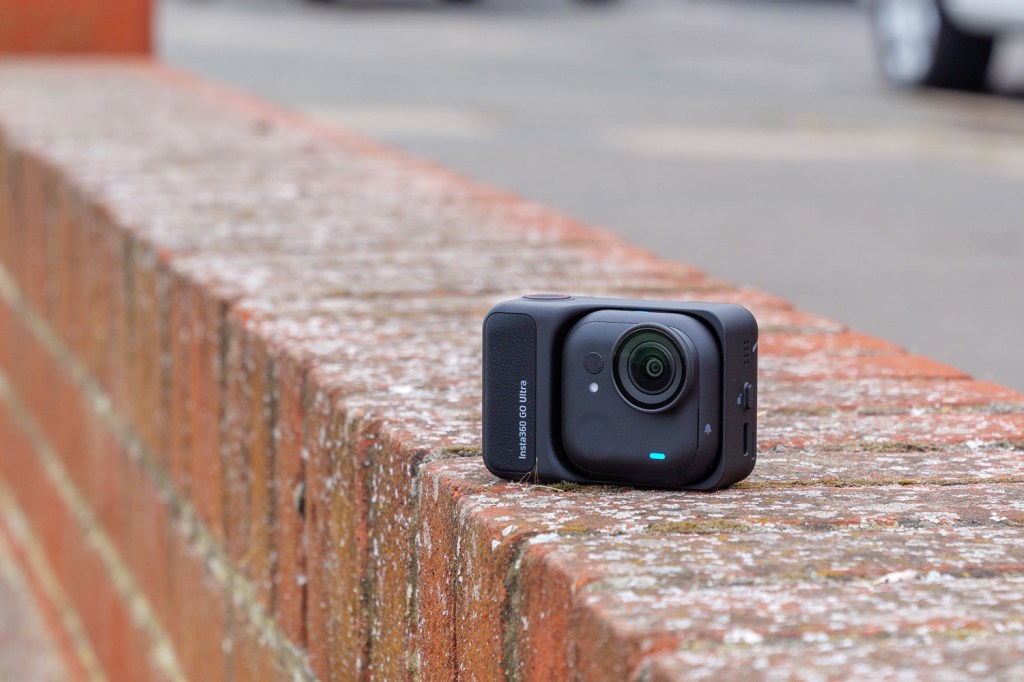
The Insta360 Go Ultra uses a similar touchscreen UI to previous Go models (as well as the Insta360 X range of 360 cameras), and I had little issue getting to grips with selecting shooting modes, browsing footage and tweaking settings. The Action Pod’s touchscreen is bright, crisp and responsive, and its three physical buttons easy to access.
Alternatively, the standalone camera can be controlled via the Insta360 app and a smartphone, which is ideal if you don’t want to bring the Action Pod along on your adventures (or you want to keep it in your bag). The standalone camera itself has only one button, which can be used to stop and start recording.
On the performance front, I was pleasantly surprised by the battery life. Setting the standalone camera to its power-saving endurance mode, I was able to record 4K 30fps video for just under an hour before the battery died. With the camera docked in the Action Pod, the same settings resulted in a video 157 minutes long. Recharging is fast too: with the right charger you can recharge 80% of the standalone camera’s battery in just 12 minutes.
Sound quality is fine, but as is often the case wind noise can play havoc with the microphones on blustery days. I found that the two-level wind reduction has its limits, and if you’re intent on capturing clear vocals for vlogging or voiceover, pairing the Go Ultra up with a wireless mic would be advised. I’ve been told the Insta360’s own Mic Air will be fully compatible with the camera post-launch, but wasn’t able to test it with the current firmware.
Video and photo quality: a sensational sensor
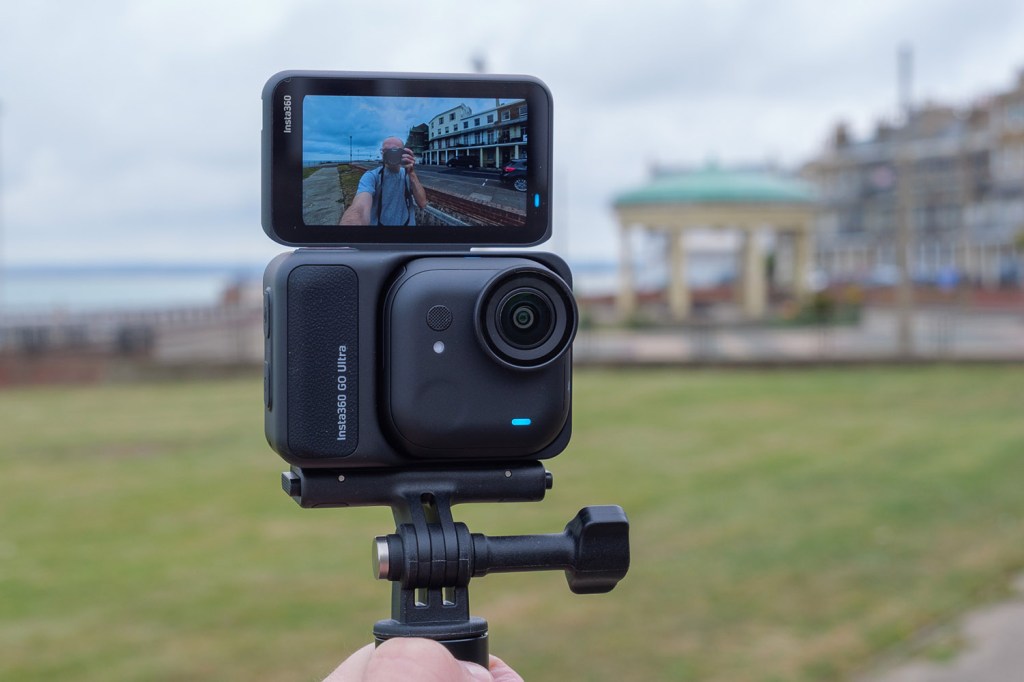
The new imaging setup pairs a 1/1.28in sensor (which is 221% larger than the sensor on the Go 3S) with a 5nm AI chip for noise reduction and image processing. This results in new shooting modes like 4K at 60fps and PureVideo (for low light situations), as well as enabling Active HDR to be used with 4K video, provided the frame rate is kept below 30fps.
One of my issues with the Go 3S was that it narrowed the camera’s field of view a little too much for comfort, and happily the Go Ultra offers a much wider view – at least in 30fps mode. When shooting 60fps, the angle closes down a bit, but it’s no worse than the Go 3S at 30fps.
For those who want smooth, level footage straight from the camera, the Go Ultra also offers three levels of image stabilisation and, via its FreeFrame mode, horizon locking to 45º and 360º. It’s an impressive action cam setup for something so compact.
General image quality is superb for a camera so small, and the Go Ultra works brilliantly for vlogging and sports. In good lighting conditions the 4K detail and dynamic range are excellent, and even after dark PureVideo means it’s capable of doing an acceptable job.
There are only areas I feel it lags behind full-size action cameras on the video front. The first is slow motion capture, as it can’t really do it at above 2.7K resolution. A 4K 120fps mode would have been great. The second is that it currently lacks a flat log colour profile for post-production colour grading. Perhaps we can expect one or hopefully both in the inevitable next generation of the Go.
Oh, and the camera captures 50MP (8192 x 6144) still photos too – a pretty big leap over the Go 3S’s 12MP (4000 x 2250) snaps. I’ve never been a big fan of using action cameras for stills – a smartphone is going to be a better option in 99% of cases – but there’s plenty of detail and punch on offer here if you do need to capture one.
Insta360 Go Ultra verdict
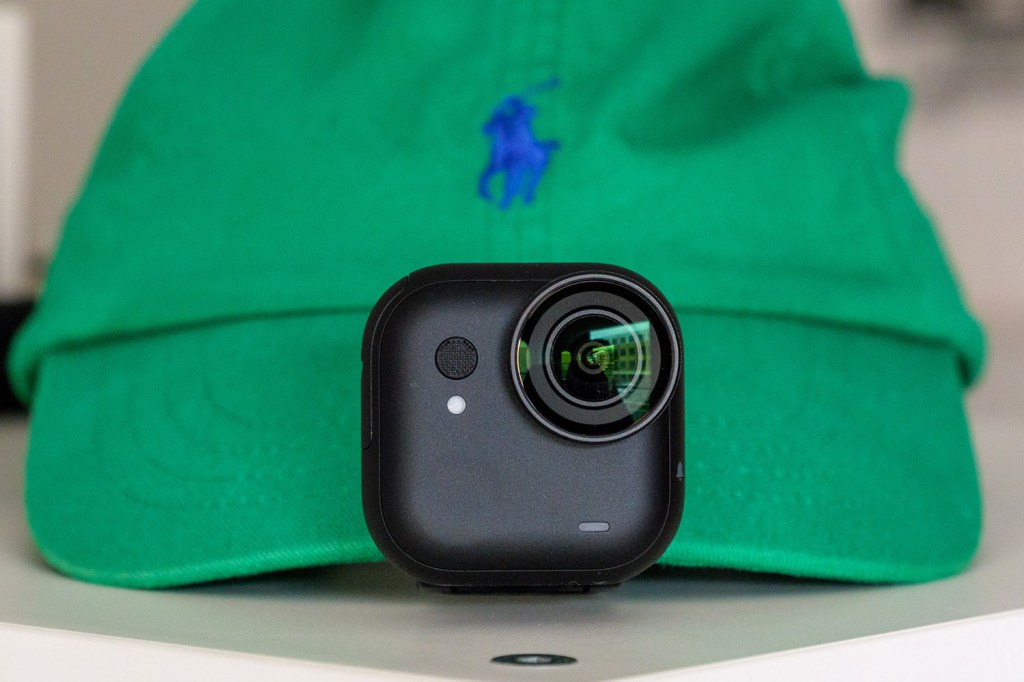
I’ve always had a blast reviewing Insta360’s Go cameras. Their tiny size makes them so much fun to use – but I’m really happy to say that the Go Ultra is the first in the series that can really go toe-to-toe with a full-blooded, full-size action camera on the image performance front.
Sure, it’s had to sacrifice a little bit of its compactness to get there, but not enough to make it uncomfortable to wear or mount. What we’re left with is a best of both worlds situation, and nine times out of ten I’d much rather have this camera in my pocket than a GoPro Hero 13 Black. The Go Ultra’s versatility and size means it can be worn in places a GoPro just wouldn’t fit, and it’s capable of great picture quality in almost every scenario.
Stuff Says…
A generational leap in video quality makes this not just a great tiny action camera, but a great action camera full-stop.
Pros
Superb all-round image quality
Small enough to wear on pendant or hat
Good battery life
Cons
Not as small and light as previous Go models
Action Pod still not fully waterproof
No flat log colour profile
DJI Osmo 360 technical specifications
| Sensor | 1/1.28in CMOS |
| ISO range | 100 to 6400 |
| Video recording | Up to 4K 60fps / 2.7K 120fps / FHD 240fps |
| Video coding | H.265, H.264 |
| Storage | microSD card slot (up to 2TB) |
| Connectivity | Wi-Fi 6, Bluetooth 5.4, USB-C |
| Dimensions | 46 x 45.7 x 18.3mm (Action Pod: 70.4 x 48.8 x 33.3mm) |
| Weight | 53g (162g including Action Pod) |


